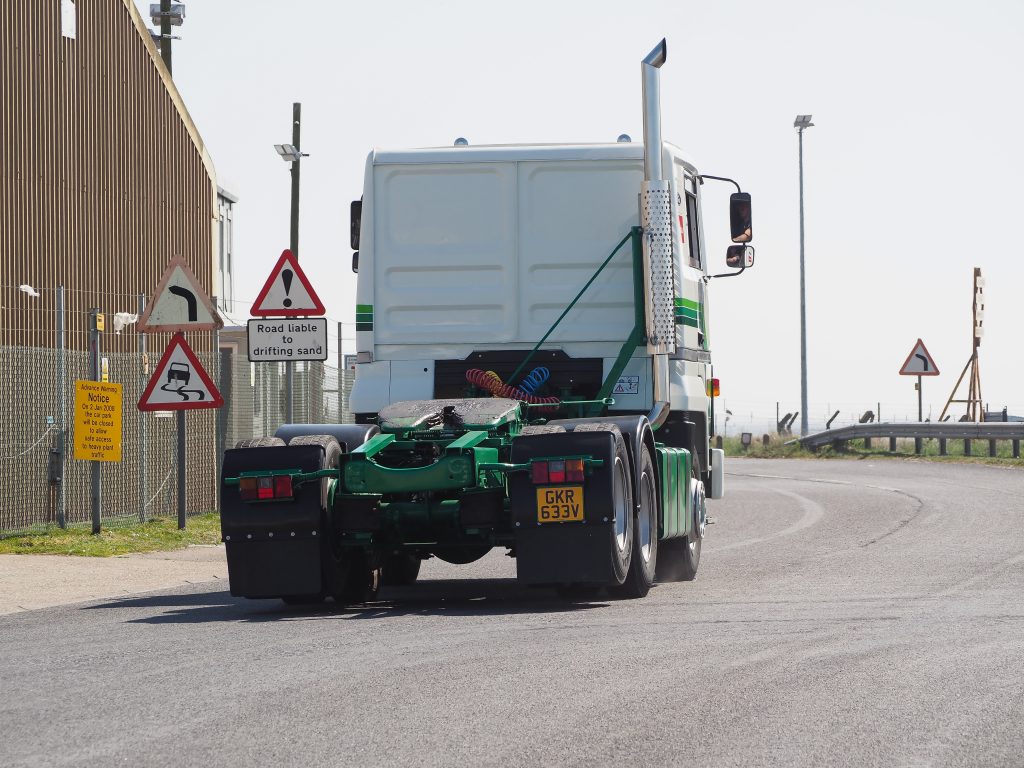Jaime Peace restored this 1979 Ford Transcontinental from near-scrap condition, and did most of it in his front garden! Peter Simpson tells the story.
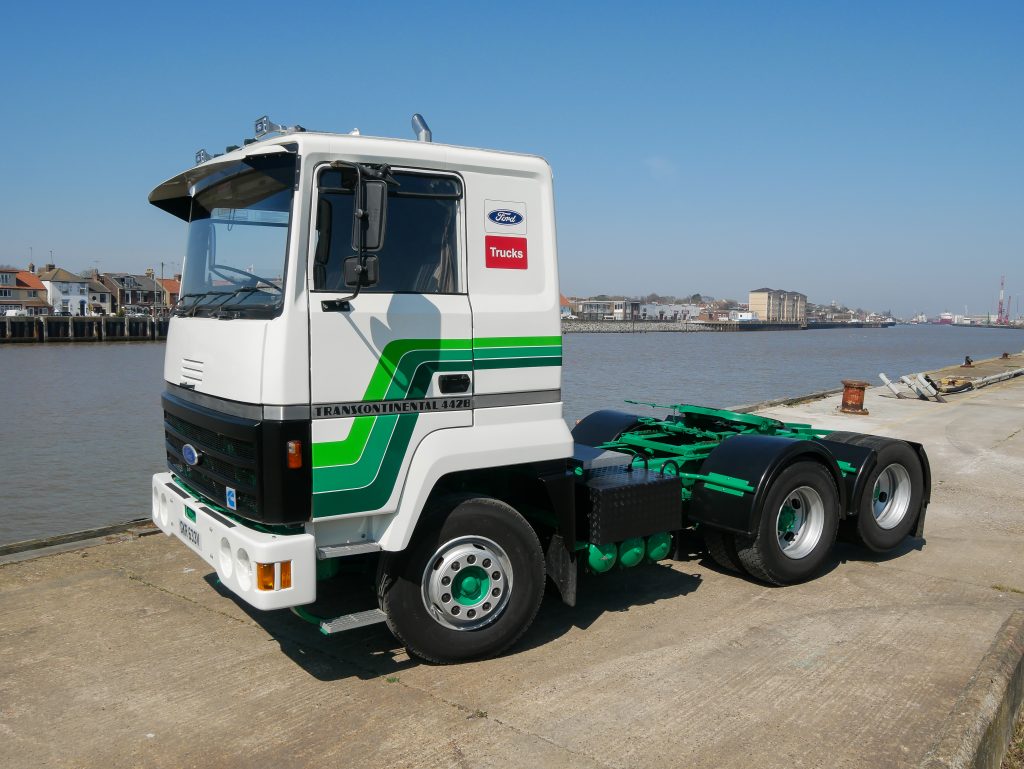
“I like Fords and I like lorries.” That short phrase sums up why Norfolk-based oil and gas engineer Jaime Peace took on the restoration of a 1979 Ford Transcontinental. What makes this particular restoration all the more remarkable, though, is that not only is it an almost-100% home restoration funded and carried by the owner, but that most of the work was carried out at home.
Now aged 39, Jaime grew up with lorries as his father was an HGV Driving Instructor who worked with a succession of Ford Cargos and D-Series. Jaime developed a love of the blue oval, and, from childhood he “always wanted to own both the biggest Ford and the fastest Ford.” He actually achieved the second of these ambitions first when, aged 19 he bought the first of a succession of Cosworth-powered Fords, a line which culminated with the 550bhp Sierra Cosworth he currently owns.
The lorry thing was still there though. In 2016, despite having a wife and two young children, he decided that it was basically ‘now or never’. He began searching for a suitable project. This led to the lorry we see here, though it looked massively different then to how it is now…
Kentish Transcontinental
Jaime’s Transcontinental is a 1979 4428, with Cummins 290 14 litre engine and a nine-speed Eaton-Fuller gearbox. As the registration mark suggests, its first operator was in Kent. It was new to Ken Trowell as a four-wheel tractor unit. Here it worked mainly on cement tubing pipework out of the spun concrete works at Milton, near Sittingbourne. From here, it was bought by one of his drivers. He repainted the lorry – though it retained elements of the Ken Trowell scheme. More significantly, he had a second, lifting rear axle added by Euro Axles of Newcastle Under Lyme . In this form, and still based in Kent, it was used on a variety of general haulage work including curtainsiders. By 1995 it was painted blue and being used on container work – there are photos online of it at this time.
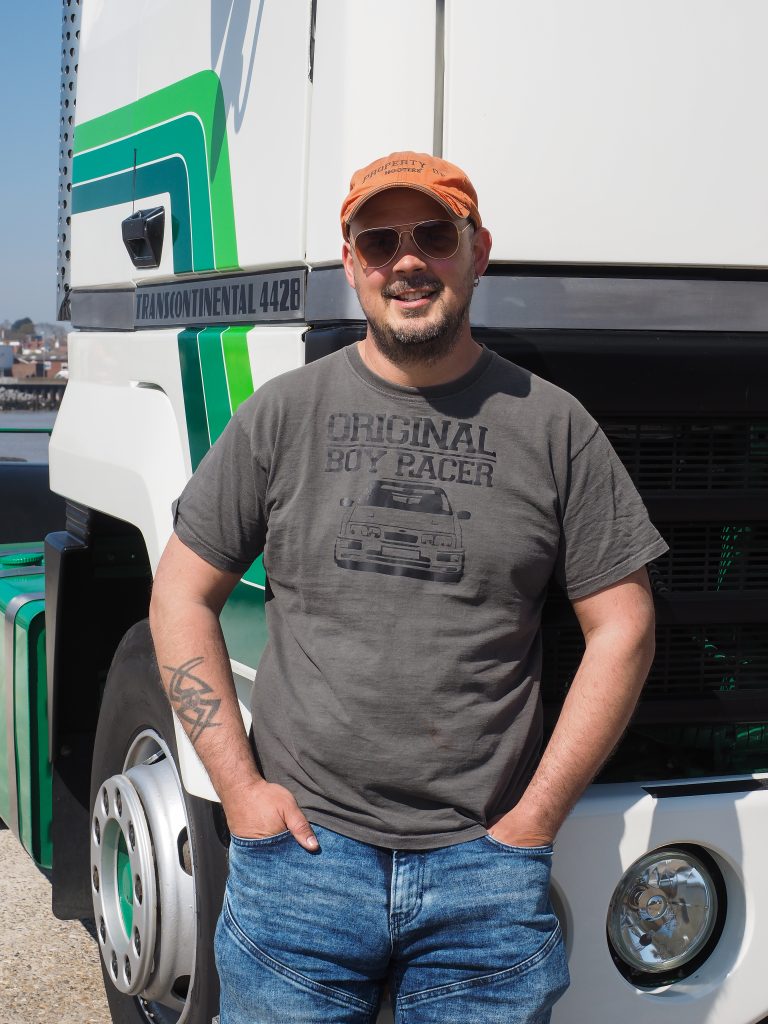
Steam engine transport
Its next known owner was steam engine enthusiast Terry Hand of Rudgwick in West Sussex. Terry was also, apparently, one of the organisers of the Rudgwick Steam and Country Show. He used the Transcontinental, with a low-loader trailer, for steam engine transport. By now, the cab colour had changed again; it was now black.
After this, the lorry – by now in need of full restoration, went to Shane Bereton of Somerset-based Tor Trucks. Here it joined another, similar lorry – the intention, apparently, was to make one good lorry out of the two. That, however, never actually happened and eventually Shane decided to sell them on as a pair.
It was at about this time that Jaime first heard about the lorries. He was already in contact with various existing owners, including Robert Deloo who told him about a pair of Transconentals being sold for restoration in Somerset. Jaime made contact, spoke to Shane’s secretary and arranged to take a look.
Transcontinental inspiration
However, before he was able to make that journey, a ‘slight problem’ arose. Jaime’s wife Michelle was suddenly and completely unexpectedly made redundant! Clearly this had a massive impact and any thought of buying a lorry to restore clearly had to go on hold. Fortunately, Michelle found another job without too much difficulty…
By now it was June 2016. Jaime went, as he often does, to the Classic & Vintage Commercials Show at Gaydon. Here, he saw Robert’s stunning restored 6×4 Transcontinental. He decided, there and then, that he would ring Shane again on Monday to see if he still had the two projects. The call was made. Shane still had them, but made clear that this was because he wasn’t desperate to sell, and if Jaime didn’t want them, he’d do them himself. They were also being sold as a pair, not individually.
GO West…
So in early July 2016 Jaime did finally make the trip down to Somerset. He took £500 in cash to leave as a deposit if he decided to go ahead. However, when Jaime turned up he took one look at the lorries before having second thoughts. “Every bit of both lorries was knackered.” He did though, spend seven hours with Shane – who he describes as a “top bloke” before saying he’d have to think about it. The project was much bigger than he’d expected.
Many potential customers dsay “I’ll think about it” when they actually mean is “I don’t want it”. Jaime, however, did as he said that he would. Following further conversations with Robert, he called Shane back a few weeks later to say he wanted to go ahead. As Shane wanted to sell both lorries, the ‘deal’ was that Jaime would collect both. However Robert would buy the second one and Jaime would ‘deliver’ it on the way back. A deposit was paid online, and both lorries duly collected using transport kindly loaned by C. F. Turner Haulage…
Major project
As noted a moment ago, by this point GKR633V was in a bit of a state – to put it mildly! The cab, always a weak spot on these lorries, was especially bad, and Jaime’s original plan was to recab it. However some areas – especially around the back – that are normally bad were actually quite good. So taking also into account that any replacement – if, indeed, he could find one – would also need work, he decided to repair what he had.
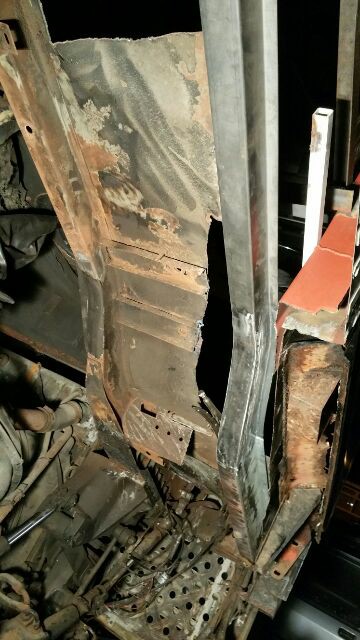
Now, though, he’s far from certain that was the right call! In a nutshell, it took him a full year of welding every evening, including through the winter of 2016-17, to get the cab solid and right. As our photo of the cab tipped up shows, its base comprises four parallel front to rear cab ‘chassis’ members. Everything outside the two inside ones is new material, including the outer rails themselves which Jaime made from scratch.
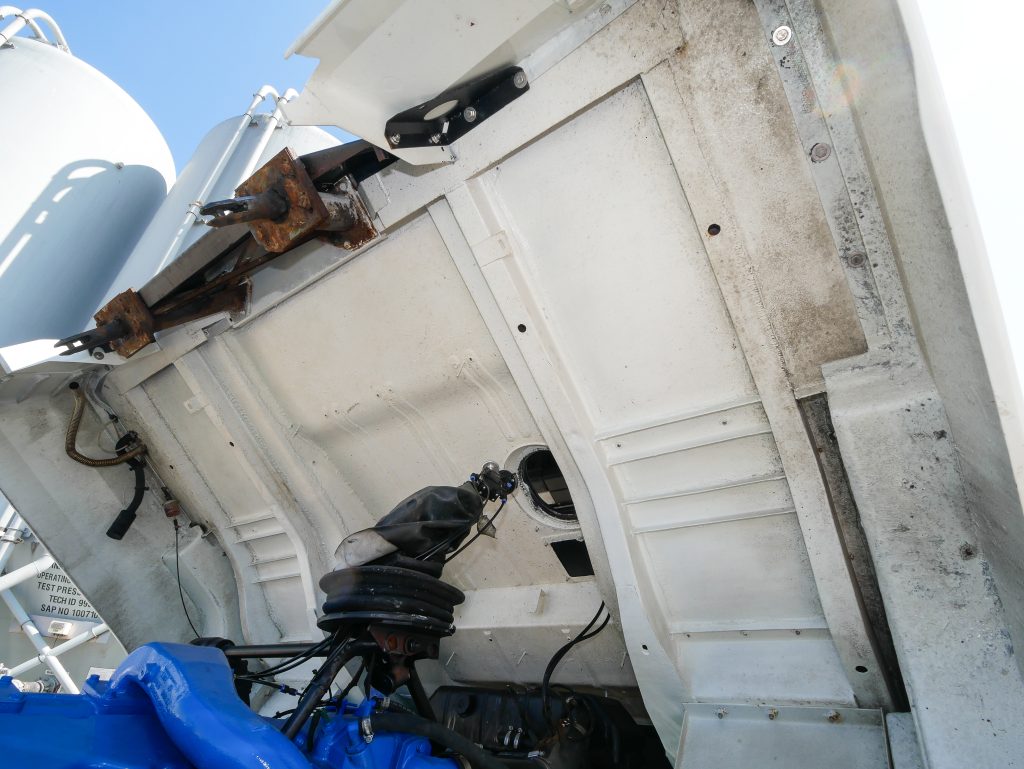
Metal under glass-fibre
On the outside, all the underpinnings below the bright stripe are new including the bottom of the A pillars and all the steps from the middle down are glass-fibre. The support behind is, however, metal, and Jaime has had to either renew or repair all this extensively. Even the roof needed welding! At the back, this cab originally had windows behind the doors but these had been “removed roughly” in later life using filler and tacked-on panels. Jaime has retained the windowless configuration here as he prefers it, though obviously all the work has had to be redone ‘better’.
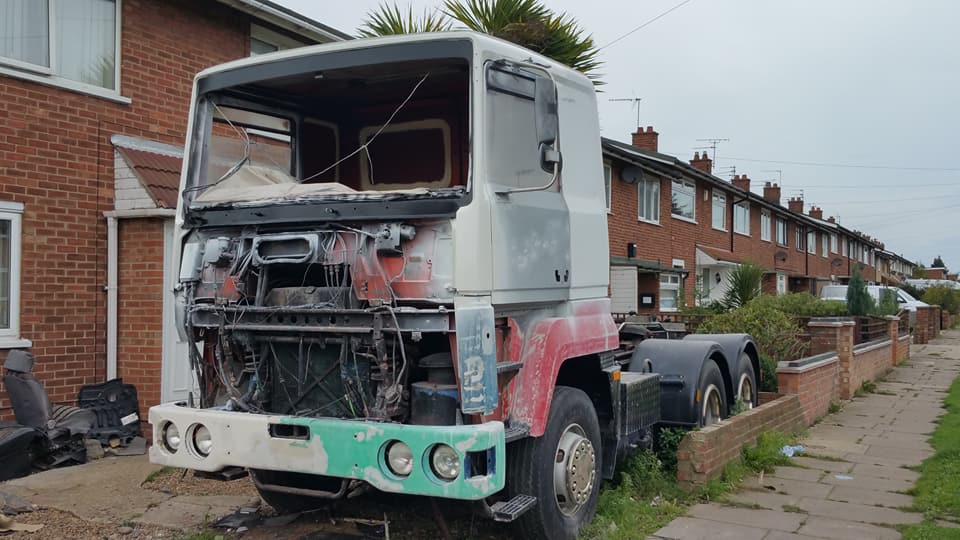
Nothing to work from
There were two other significant problems with this amount of work being needed. Firstly, because so much original material had rusted away, it was often pretty-much impossible to see what should be there. Nothing in the way of new or remanufactured panels is available for Transcontinental cabs, meaning anything and everything has to be made from sheet steel. Fortunately, Jaime is “pretty good” (his words, we’d go further…) when it comes to making up panels and repair sections. He also has an 18in vice-mounted metal folding machine – and knows how to use it. Where larger sections were required, an local engineering company – Coday Ltd. – were able to cope with anything Jaime threw at them. Most parts were made from 2mm sheet steel. This is thicker than the original so, hopefully, better-lasting.
As for determining what shape replacements should be when no suitable pattern was available, Robert was often able to supply photos of what particular parts should look like and how it went together, but the rest was “educated guesswork.” Though the outer lower panels are glassfibre, all needed repairs. The original glassfibre front bumper, hidden behind a stainless steel sheet, was broken into three pieces.
Subtle trim upgrades
The cab interior was also ‘a bit of a mess’ but the original seats were present, albeit in poor condition. Jaime was, however, able to track down the source of the original seat material used by Ford. A lady in Wales who Jaime came across after seeing her sell a Transcontinental workshop manual online and who subsequently trained as an upholsterer made up some covers to the original pattern. Two departures have, however, been made from standard; the original – and ripped to shreds – rubber floor covering has been replaced with carpet, and a new rood lining has been made from plywood covered in fake black suede which, as the photos show, looks a whole lot better than it may sound! Jaime has reconfigured the bunks slightly so his children can sit on the top one when attending shows.
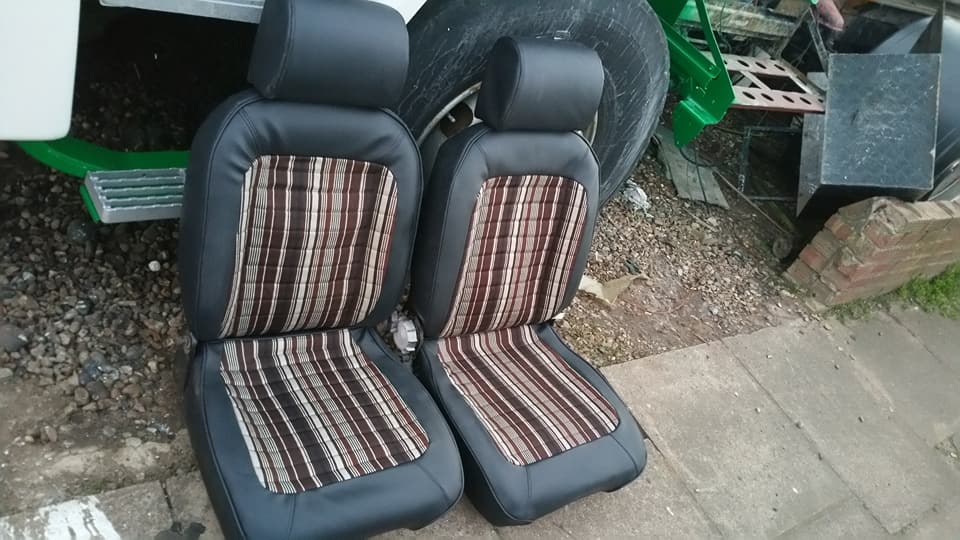
Stepped chassis
When it came to the chassis, Jaime did all the typical restoration tasks such as the battery box and air tank brackets. His biggest issue, however concerned the chassis itself. When the ‘tag’ axle had been fitted, the chassis had been extended. This had been done in the traditional way for working lorries. This is by making the extension from slightly narrower members, and run them out from inside the existing ones. This, though, does lead to a stepped look. Jaime wanted, as far as possible, his lorry to look like it had always been a 6×4. So he made up a full-size extension piece, and used part of the narrower original extension pieces to provide strength for the join. He retained the original rear crossmember, though it needed work and removal of an added tow-hitch. He then needle-gunned everything to remove rust and epoxy-primed it all prior to painting.
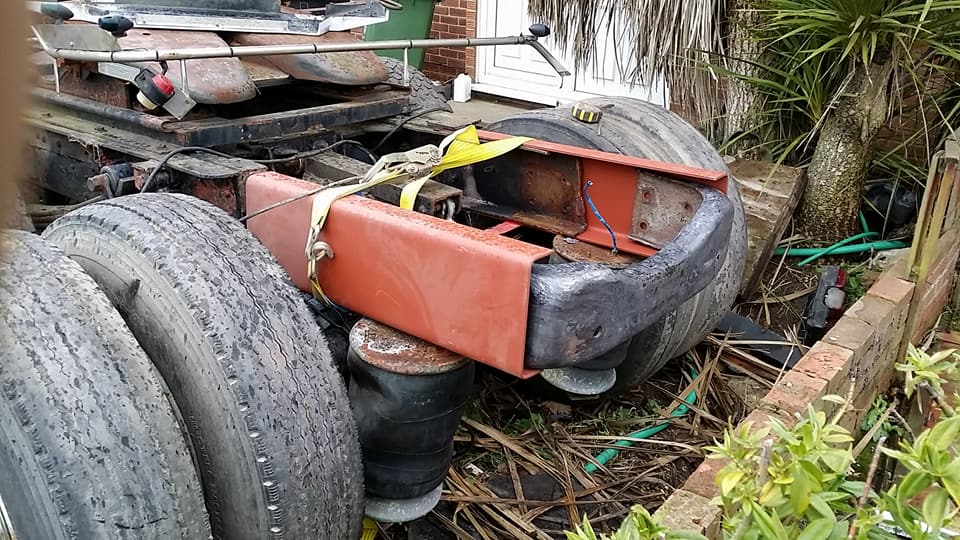
Mostly painted outside
When it came to painting, Jaime removed anything that could be removed and dealt with them in his garage. Many bits were, however, too big and/or too ‘attached’ and these had to be dealt with outside. White was chosen as Jaime liked Robert’s show Transcontinental KEV108Y. However to avoid his being an exact copy, Jaime chose green rather than blue for the chassis and so on. The green used is actually a Mk1 Escort colour.
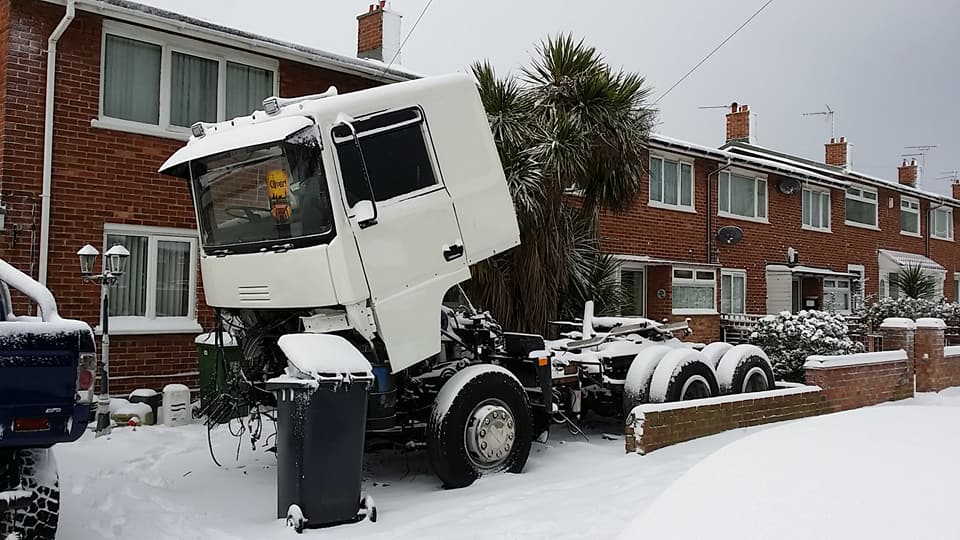
Transcontinental Mechanicals
On the mechanical side, Jaiime removed the exhaust manifold and turbo, along with 38 years accumulation of grease and dirt. He describes the latter as a “horrendous job.” He then painted the engine back into the original Ford blue, and did a full service. The lorry came with an ERF front axle beam – most likely to counter the poor front brakes which are something of a Transcontinental characteristic. This has been retained, but the actual brakes are now Scammell rather than ERF.
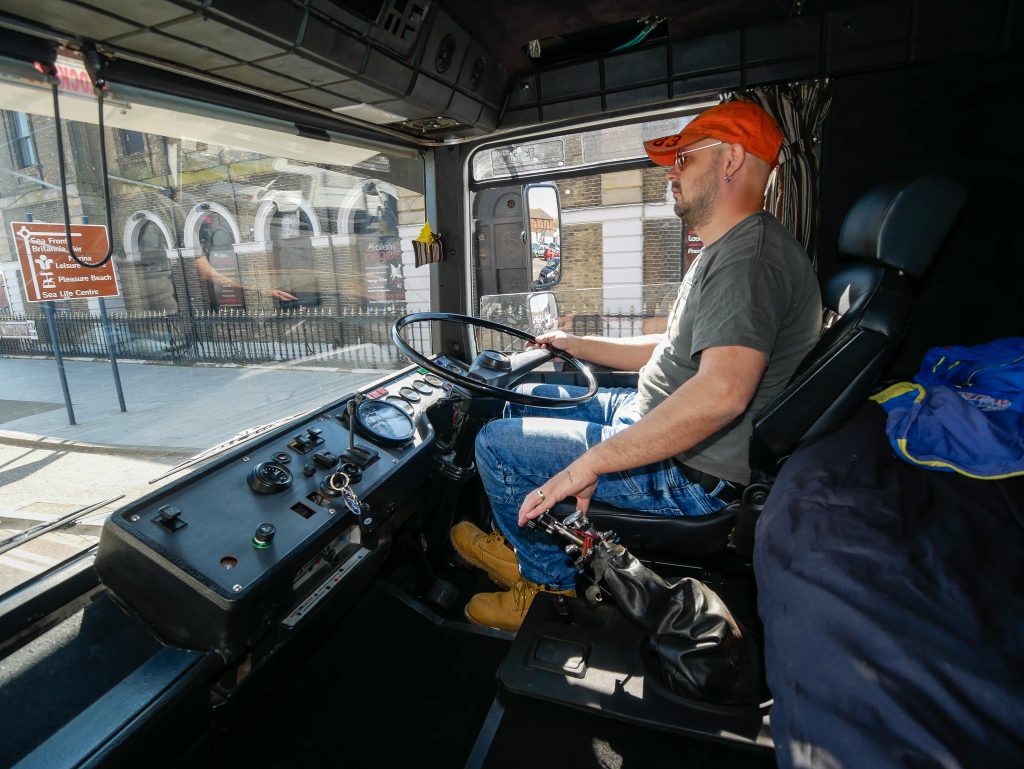
The lorry was finally ready for the road in September 2018, by which time of course the 2018 show season was nearly over. There was, however, a bit of time for driving around and ‘snagging’ a few minor problems. The first actual show appearance was at Norwich, at the end of March when Jaime’s new restoration was much appreciated – and of course few who saw it there knew anything about the conditions under which it had been restored!
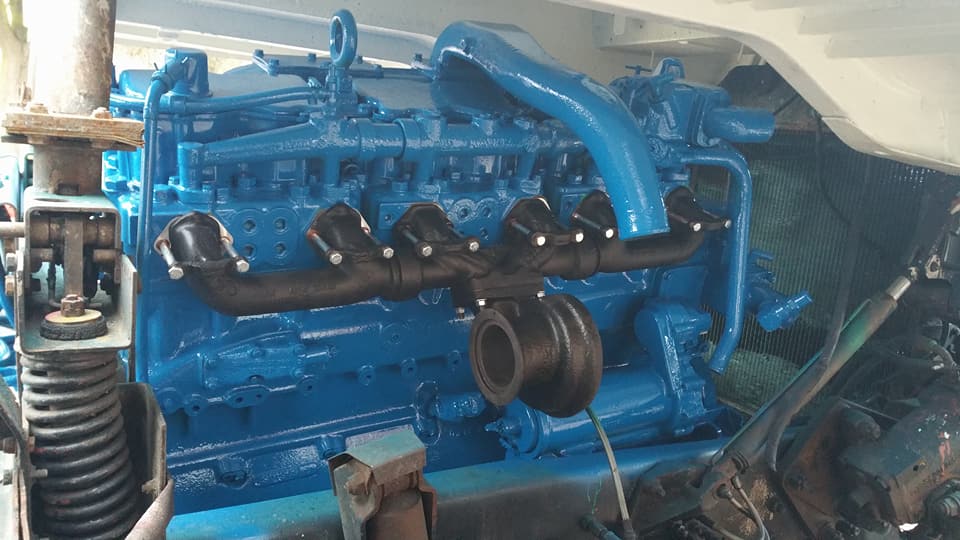
As for future projects? Well when we visited for the photoshoot he did mention that he has recently acquired a 1993 Volvo f12 Globetrotter – one of very last – which is currently awaiting restoration. There’s currently no time-frame for this one to be started or finished. It will take as long as it takes, but however long that is, it’ll be well worth the wait…
To read more articles like this every month, subscribe to Classic & Vintage Commercials magazine by subscribing here. And find the latest news, exclusive looks and more at the CVC website here.
